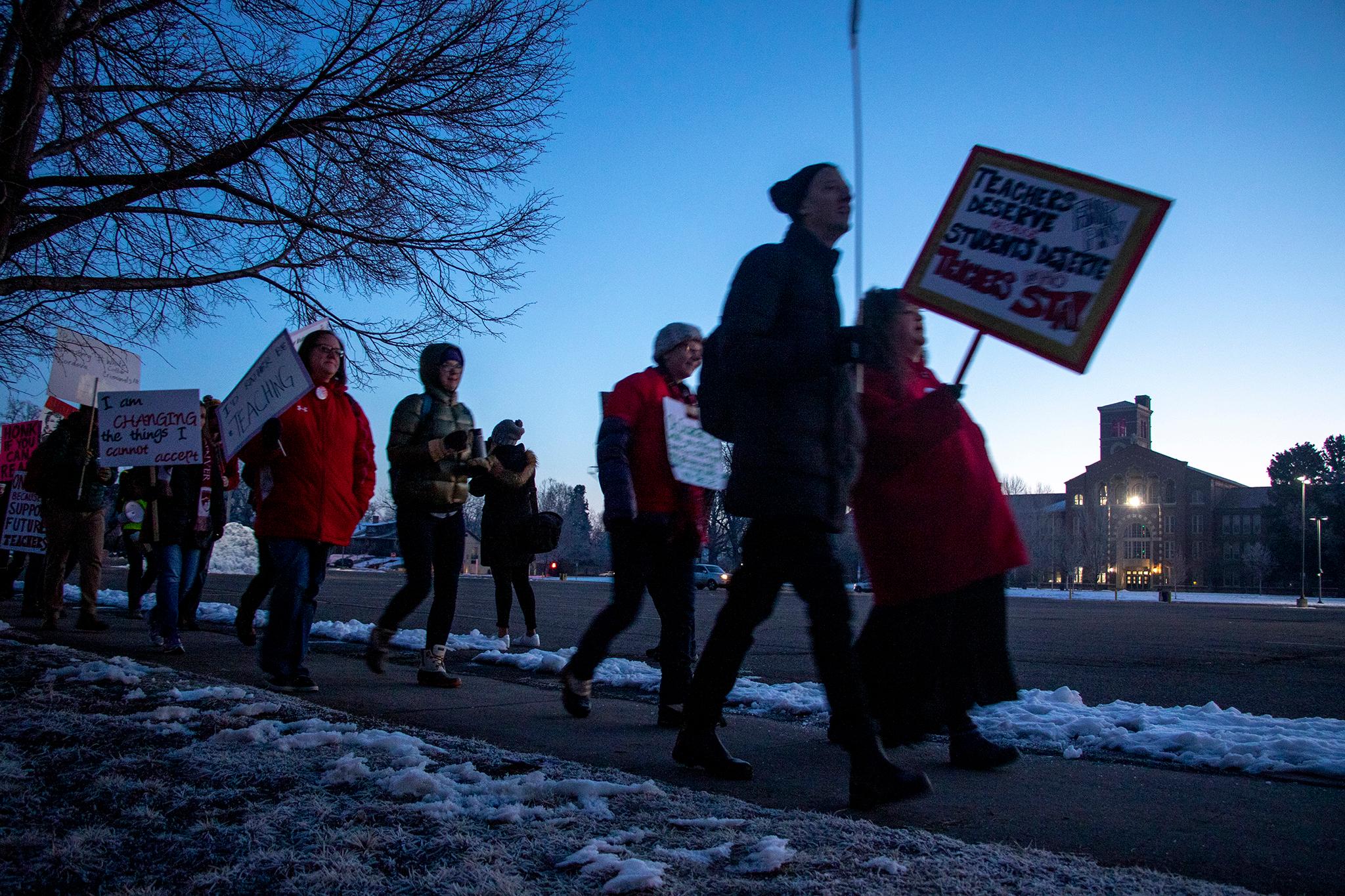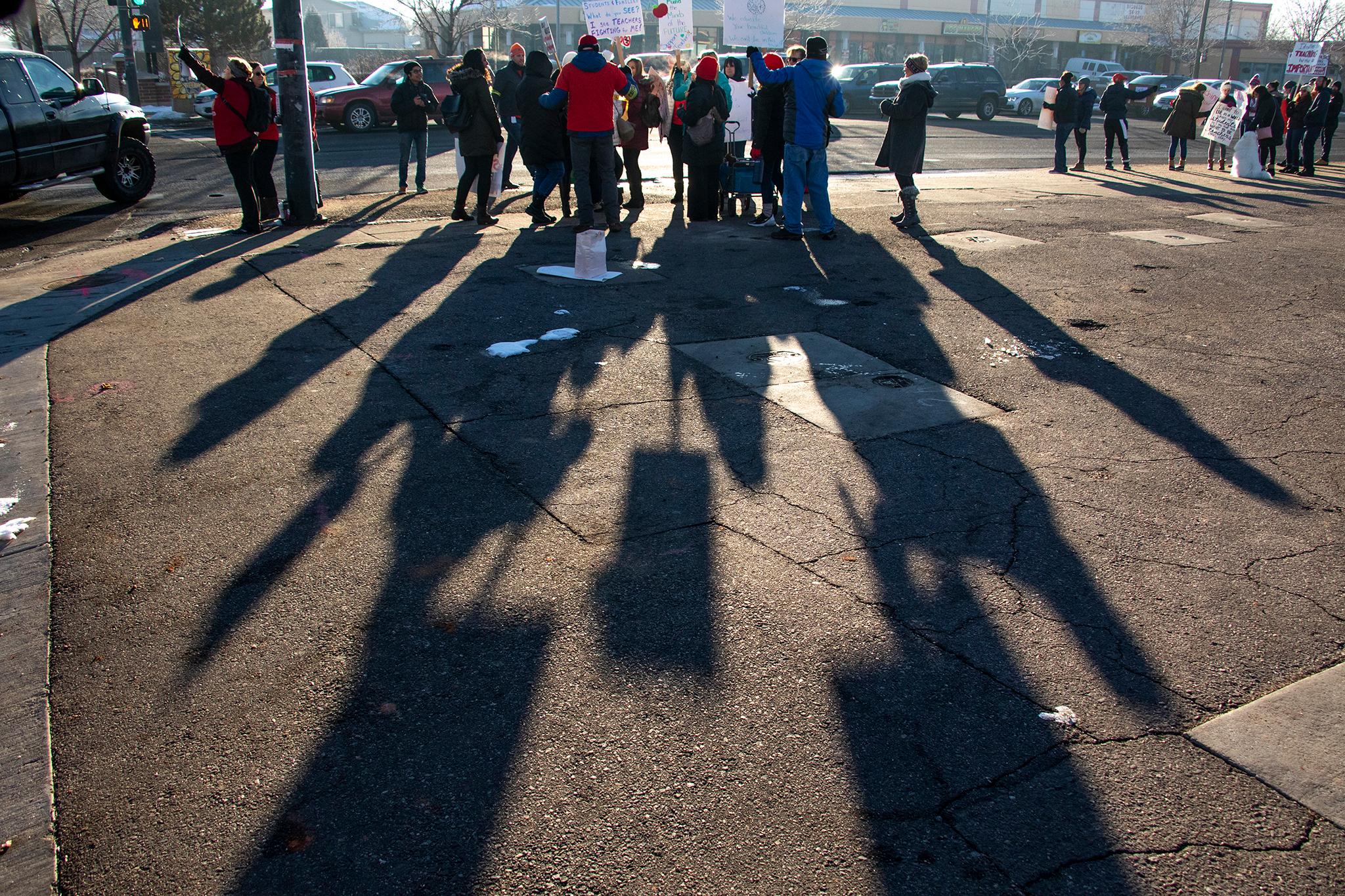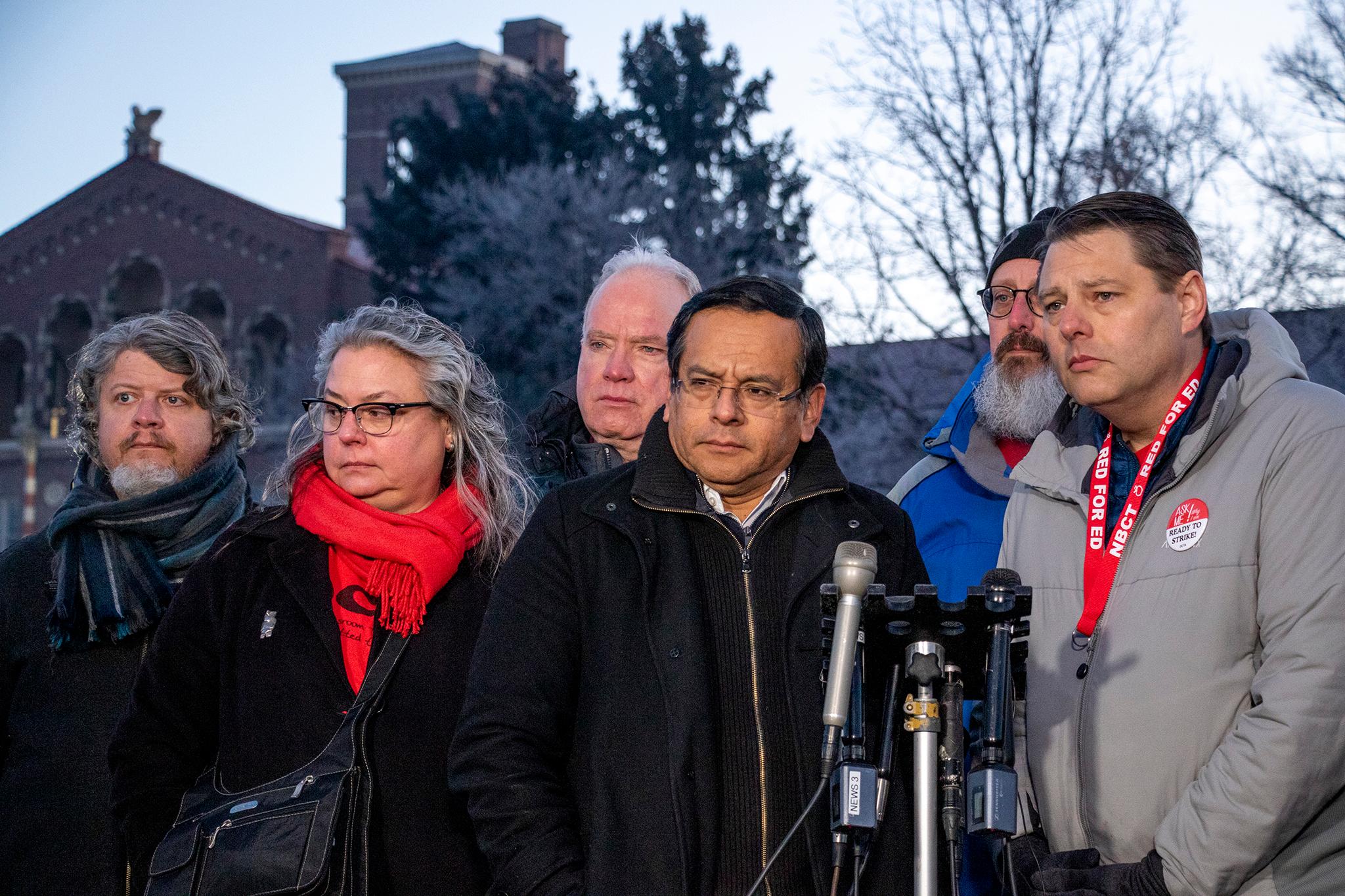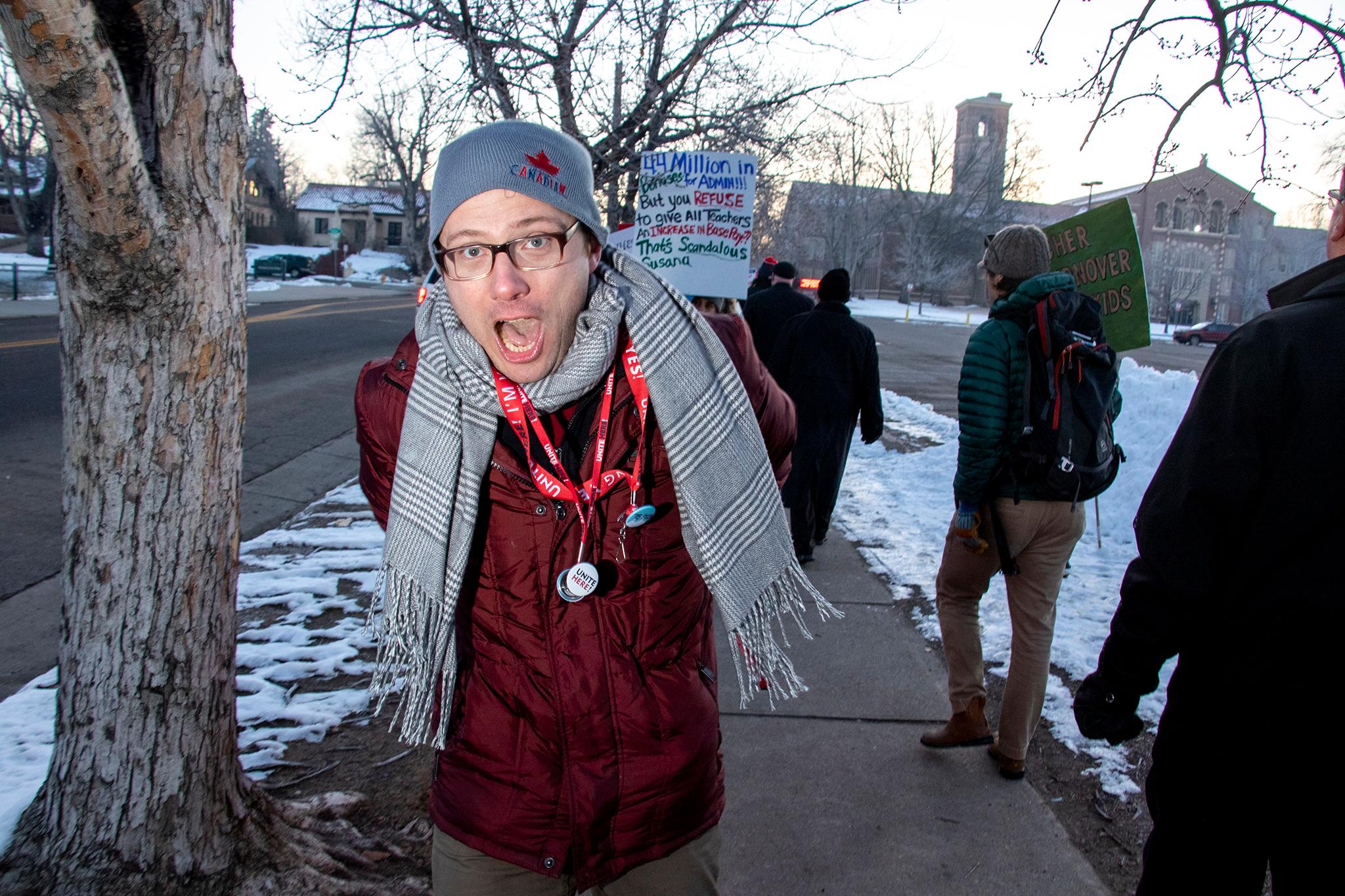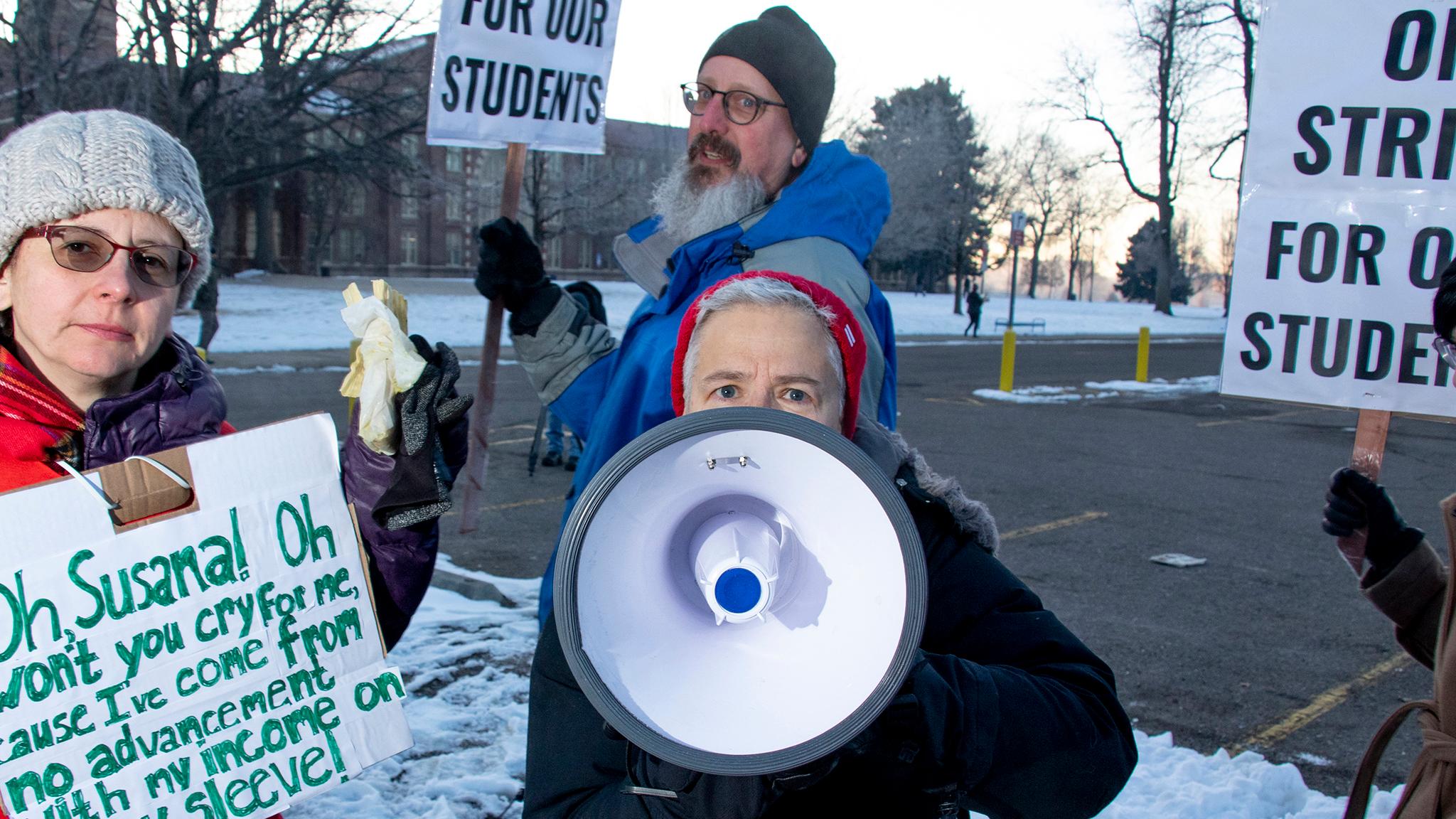NOTE: The strike is still on. Here's our day two coverage.
Denver Public Schools teachers on Monday began their first strike since 1994 after several rounds of negotiations with the school's district failed to come up with an agreement on changes to a program offering bonuses for educators meeting certain requirements and increase to teachers' base pay.
The latest:
Late Monday morning, Denver Public Schools Superintendent Susana Cordova said at a press conference that the district will asses every school's situation this afternoon, and it was unclear if all schools would be open on Tuesday.

Cordova spent Monday morning visiting more than a dozen schools. During a press conference on Monday, she said the district and the teacher's union were scheduled to restart negotiations Tuesday at 10 a.m.
"I think our goal is going to have to be to talk as long as it takes to get to a deal. I'm prepared to do that," Cordova said.
She didn't personally visit East High School, the site of perhaps the most chaotic scene from Monday's strike. She said her staff visited and saw a most "orderly" environment. She personally saw schools with "lots of teachers out." Some schools had a lot of picketers; others did not.
She said choosing which schools to keep open will happen on a school-by-school basis. She couldn't immediately provide information about the number of teachers that walked out. Chalkbeat reported that DPS said 2,631 out of 4,725 teachers did not report for work. The Denver Classroom Teachers Association, the union representing Denver educators, said in an email Monday that based on their sign-in sheets and headcounts, 3,769 teachers and special service providers participated on picket lines this morning. The union represents about 5,600 educators overall, according to their website.
"As I went in, it felt very calm, very quiet, lots of teachers in the building, lots of adults from central office supporting," Cordova said, before adding later: "It was not a normal day, but I didn't see any classrooms where I felt the students weren't safe."
Crash course:
Need the high-level info on the strike? Among other things, teachers are upset about compensation -- basically, they say they're not getting paid enough, and that a pay structure once thought to be clever and focused on equity has turned out to be unpredictable and ineffective. The district agrees on some points, but not others, and talks broke down dramatically over the weekend.
The New York Times just packaged it up for a national audience. Start here.
So what now? How many kids are showing up? How many teachers are actually striking? How are schools handling the kids who've shown up without anybody to teach them? Chalkbeat has 10 things to watch today, plus context.
The question people always ask: But isn't marijuana money supposed to be fixing this? No. Here's a recent Denver Post story about where that money goes.
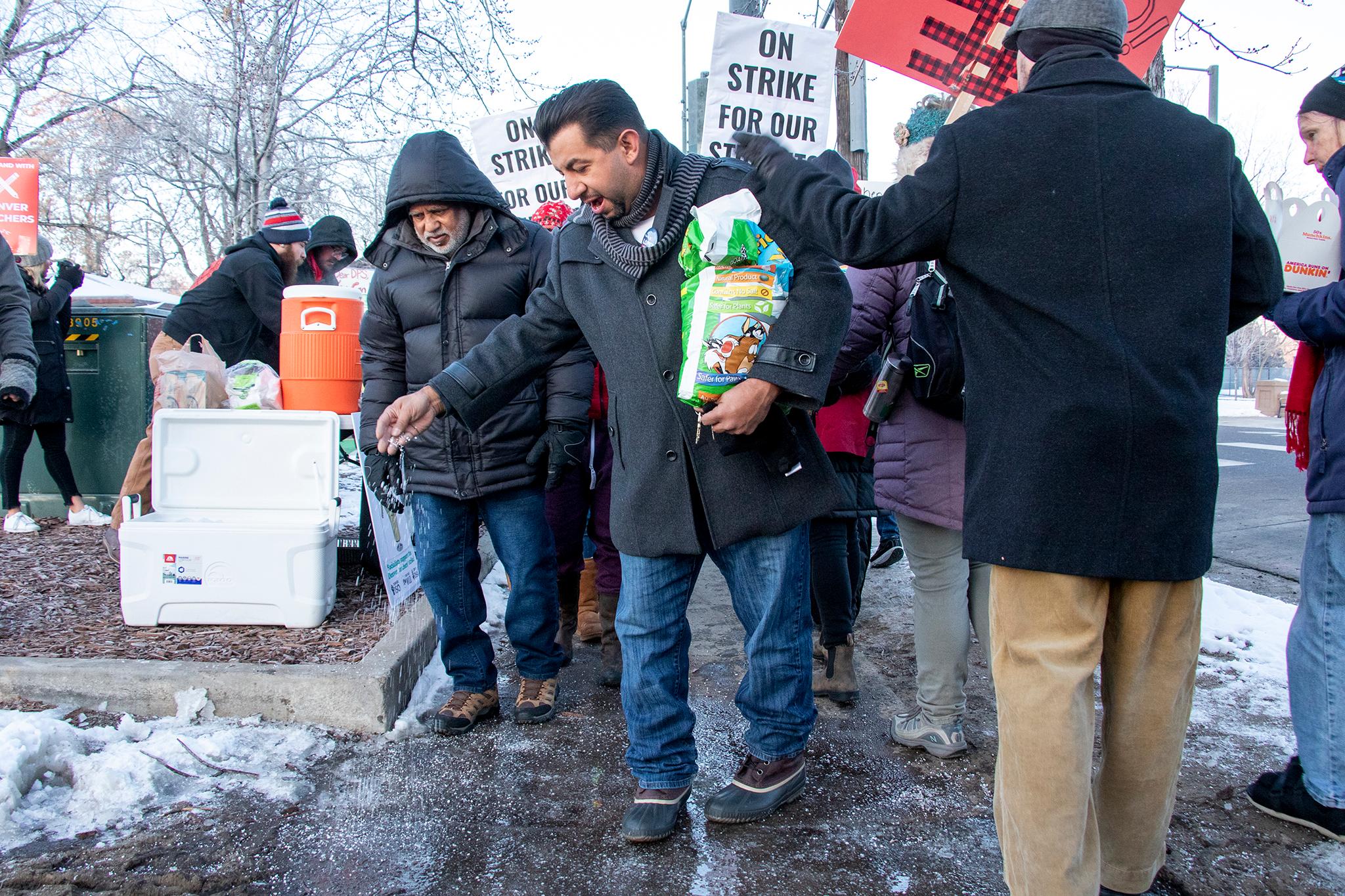
Here's what Denverite reporters saw and heard today:
Teachers began picketing before dawn at South High School on a very cold Monday morning. By the time the sun rose, more than 100 were marching in circles chanting "Hey hey, ho ho, Cordova has got to go" and "What do we want? More pay! When do we want it? Now!" And, in some cases "Yesterday!"
Special ed teachers "can't afford to live in Denver," said Bernie Janelle, a special ed teacher at South. "We're going to lose some special ed teachers, there's already a shortage."
As students began to arrive, many crossed Louisiana and the picket line to get to school. Some, like Ciara Askew, a junior, recorded the commotion on their phones.
She said she expected she'd go in and work as usual -- her teachers made lesson plans ahead of time.
"That's what I'm going to do today, give the subs an easy time," she said.
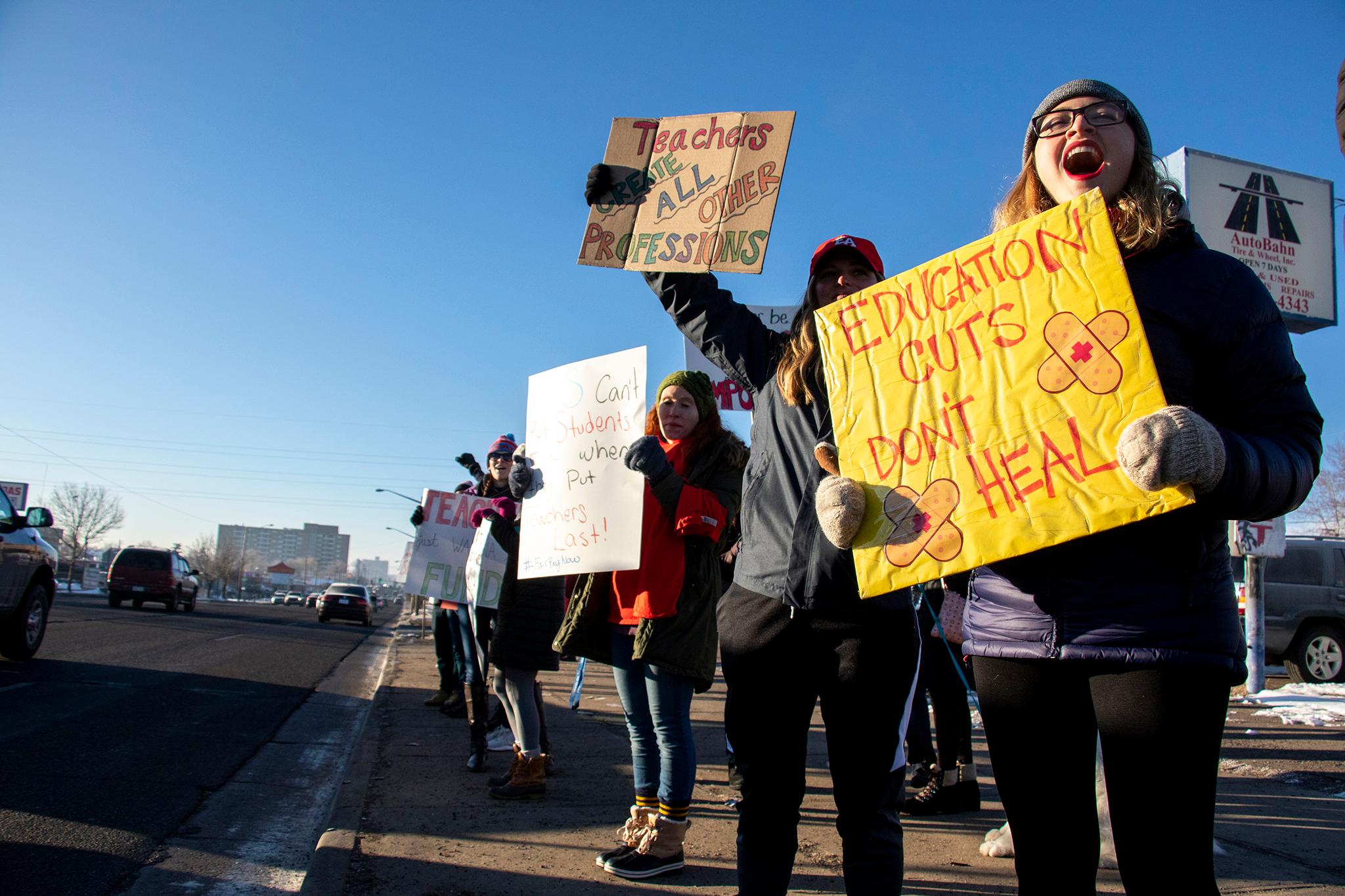
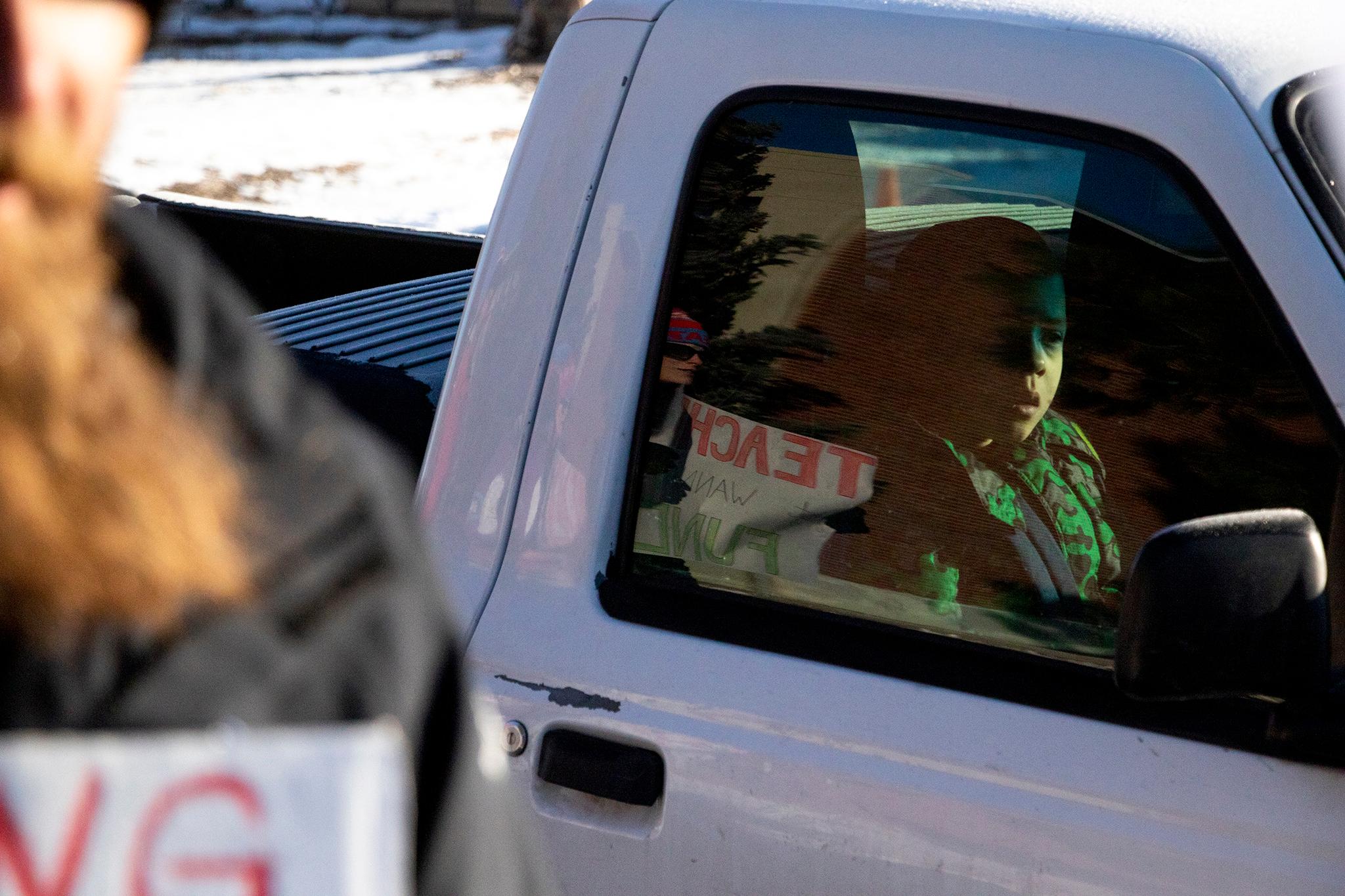
On South Federal Boulevard, a small group of teachers from Kepner Beacon Middle School sang and chanted with signs. They danced as cars passed honking, partially in the spirit of the moment, and partially because they were freezing.
"It's a little more complicated for a lot of us (on the west side) because it's true that the district wants to give more money to high poverty schools," said Caroline Houser, an eighth-grade reading teacher. "For a lot of us that's important, it does keep us, but overall, long term, that money doesn't go towards my retirement, that money's not part of my base pay and I can't count on it."
"The high-priority, low-income schools, that's a designation that can be taken away with gentrification," she said. "And we've seen that our sister school across town is in a neighborhood that's been highly gentrified and they've gone from being a low income school ... and they've lost that bonus.
"I knew people who were saying, 'I don't want to go on strike because I don't want to lose that" incentive.
Hundreds of students walked out of East High School Monday morning to join their teachers and those from other Denver schools.
Teachers at East said they were striking on behalf of students in the district, which has among the highest turnover rate for teachers.
Supporters and students outside the school were welcomed with signs, cookies and hot chocolate. Add to that the constant sounds of cars blaring their horns -- one guy was halfway out of a car, cheering from the passenger side -- while driving past supporters and picketers.

An East freshman named Hewitt walked out along with his friends shortly before 9 a.m. He said the school's Head Boy had told them to walk out, though he added he didn't think the environment at the school would be any good for learning.
"It's basically a daycare," Hewitt said -- for example, there was a party on the third floor and games of hide and seek.
Other students picketing alongside teachers at East said they were told to sign in and given sheets with educational material. They were also handed a schedule:

Andrea Leggett, a teacher at the Denver Center for International Studies at Montbello, attended a rally at Montbello Central Park. Close to 100 people showed up in cold, windy temperatures at the park located next door to where Leggett teaches PE classes.
Leggett said she wasn't looking forward to the strike.
"I think the biggest thing right now is this us versus them thing is getting really dangerous," Leggett said. "We keep talking about students first but the reality is right now, our students are not getting what they need."
Denver Center for 21st Century Learning teacher Risa Wolff picketed outside East High School. She wanted to let Cordova know she and her fellow educators are not asking for much: They want pay that provides more stability and less of a focus on bonuses.
"There's clearly tons of parents, tons of teachers, students who are all agreeing that this is something that needs to be done," Wolff said.
Teacher Lindsay Anderson also picketed outside East High School, where she's been teaching for 10 years. She handed out cookies to students and supporters on the sidewalks near a pedestrian walkway on Colfax.
"We have the fortune of teaching high schoolers who really understand that money is not going where it should in education, so there are lots of tax dollars-DPS has plenty of money-but it's not trickling down to teachers and students where it actually belongs," Anderson said. "My students are totally supportive. They know I'm striking for them."
For more from around the city, Colorado education journalist crew Chalkbeat is covering the strike today. Here's a direct link to their latest reporting.
The reports coming from inside some schools sounded chaotic
But that's not necessarily true elsewhere
Here's what it looked like outside as teachers gathered and marched Monday morning


